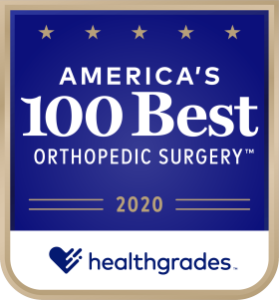 Nearly 56 million Americans—or nearly 17% of the US population—are 65 years of age or older.1 That number is expected to reach 80 million by the year 2040.2 A rapidly aging population means a growing number of orthopedic problems. As we get older, our bones and joints begin to wear down and weaken, causing pain, mobility issues, and more. Below are 3 common orthopedic problems that affect older adults.
Nearly 56 million Americans—or nearly 17% of the US population—are 65 years of age or older.1 That number is expected to reach 80 million by the year 2040.2 A rapidly aging population means a growing number of orthopedic problems. As we get older, our bones and joints begin to wear down and weaken, causing pain, mobility issues, and more. Below are 3 common orthopedic problems that affect older adults.
Osteoarthritis
Osteoarthritis (OA), the most common form of arthritis, is a degenerative joint disease that typically affects the hands, hips, and knees.3 OA is sometimes referred to as “wear and tear” arthritis, as the joint cartilage breaks down and the underlying bone undergoes changes that only get worse over time.3 People with OA may experience pain, stiffness, and swelling which can negatively impact their mobility and daily living.3
More than 32 million adults in the US suffer from OA, and the risk of developing OA increases with age.3 Other risk factors include joint injury or overuse, obesity, and genetics.3 In addition, women are more likely to develop OA than men, and some Asian populations are at lower risk.3
OA cannot be cured, but it can be treated with a combination of therapies, including physical activity, muscle strengthening exercises, weight loss, medications, assistive devices (e.g., crutches or canes), and even surgery if other treatment options are exhausted.3
Fractures and dislocations
 It’s no surprise that as we get older, our bones become more fragile. We may also develop problems with our vision, hearing, and balance that put us at risk for falls, which also increases with age.4 These all make perfect ingredients for fractures and dislocations.
It’s no surprise that as we get older, our bones become more fragile. We may also develop problems with our vision, hearing, and balance that put us at risk for falls, which also increases with age.4 These all make perfect ingredients for fractures and dislocations.
Every year, more than 1 out of 4 older people fall,4,5 and 1 out of 5 falls result in fractures or head injuries.5 The good news is there are some things you can do to help reduce your chances of falling4:
- Get regular exercise
- Do balance and strength training exercises
- Fall-proof your home
- Get your vision and hearing checked
- Know your medications’ side effects
- Stand up slowly
- Use caution when walking on wet or icy surfaces
- Hold on to railings
- Wear nonskid shoes that support your feet
- Stay inside if the weather is bad
Osteoporosis
Osteoporosis, the most common bone disease, affects more than 10 million Americans over the age of 50.6 With osteoporosis comes weak and fragile bones that increase the risk for breaks, even after a minor fall or bump.7 Many people don’t know they have osteoporosis until it’s too late and they sustain a fracture that can cause pain, disability, and loss of independence.7 If you think you may be at risk for osteoporosis or if you are seeking tips on how to prevent it, talk to your doctor.
Great Lakes Orthopaedics: Where Your Health Matters
We know what a pain orthopedic problems can be. That’s why we offer highly specialized orthopedic treatments—so you can enjoy the freedom of a pain-free, active lifestyle. To learn more about our services or to schedule an appointment, contact us today.
References: 1. Older Americans Month: May 2023. Press Release. United States® Census Bureau. May 2023. Accessed May 8, 2023. https://www.census.gov/newsroom/stories/older-americans-month.html. 2. The US Population is Aging. Urban Institute. Accessed May 8, 2023. https://www.urban.org/policy-centers/cross-center-initiatives/program-retirement-policy/projects/data-warehouse/what-future-holds/us-population-aging. 3. Osteoarthritis (OA). Centers for Disease Control and Prevention. Last reviewed July 27, 2020. Accessed May 8, 2023. https://www.cdc.gov/arthritis/basics/osteoarthritis.htm. 4. Falls and Fractures in Older Adults: Causes and Prevention. National Institute on Aging. Reviewed September 12, 2022. Accessed May 8, 2023. https://www.nia.nih.gov/health/falls-and-fractures-older-adults-causes-and-prevention. 5. Facts About Falls. Centers for Disease Control and Prevention. Last Reviewed August 6, 2021. Accessed May 8, 2023. https://www.cdc.gov/falls/facts.html. 6. Osteoporosis or Low Bone Mass in Older Adults: United States, 2017-2018. NCHS Data Brief No. 405. March 2021. Centers for Disease Control and Prevention. Accessed May 8, 2023. https://www.cdc.gov/nchs/data/databriefs/db405-H.pdf. 7. What is Osteoporosis?. International Osteoporosis Foundation. Accessed May 8, 2023. https://www.osteoporosis.foundation.




